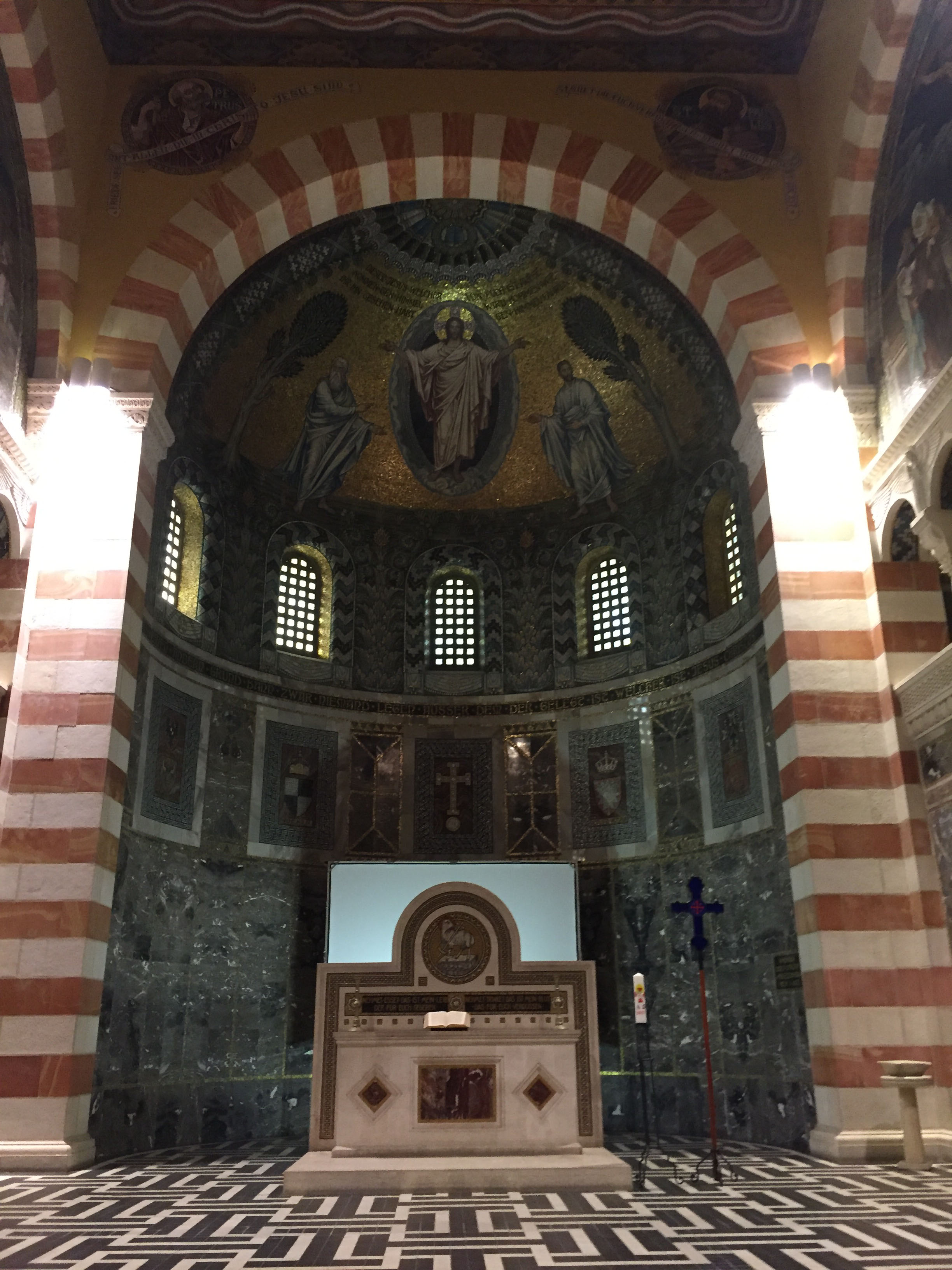Church of the Ascension
The Church of the Ascension stands on the highest point of Jerusalem, 850 meters above sea level and almost 1,300 meters above the Dead Sea. The church was built in the so-called “Wilhelminian-Byzantine style.”
 Outside the Church of the Ascension |
The German Emperor Wilhelm II and his wife, Empress Auguste Victoria, visited Palestine in 1898 and agreed to build a hospice on the Mount of Olives to treat visiting pilgrims and those suffering from malaria. The foundation was laid in 1907 and the church dedicated in 1910, though construction was not completed for several more years.
In 1914, the building was the headquarters of the German-Turkish General Staff. It was subsequently occupied by the British and, for the next ten years, served as the office of the High Commissioner for the administration of the British Mandate in Palestine.
The building was damaged by an earthquake in 1927 and used as a military hospital by the British in World War II.
In 1948, the Lutheran World Federation was given responsibility for the complex.
After the 1948 War, the International Red Cross opened a hospital on the site for Palestinian refugees. This was taken over by the Lutheran World Federation in 1950, which worked in cooperation with the United Nations Relief and Works Agency (UNRWA). The hospital was converted to a medical clinic for cancer and other diseases in 1996.
The western façade is protected from strong winds and rainfall by a massive second wall. The bells in the approximately 45-meter-high tower ring in the tones of sol, ti, re and mi, which harmonize with the bells of the Basilica of the Dormition Abbey and the Church of the Redeemer in the Old City.
The pneumatic organ was built in 1910 by the Sauer Company. It has been maintained in its original condition and is unique in this region.
 Mosaics inside the Church of the Ascension |
The mosaics were designed by H. Schaper and E. Pfannschmidt. At the request of Empress Auguste Victoria, the mosaic in the apse represents Christ ascending to heaven on a cloud (Acts 1:1-11). The mosaics along the side depict the “Kings at Worship,” the baby Jesus and his crucifixion. The mosaics in the gallery depict “Jesus with Mary and Martha in Bethany” (Luke 10:38-42) and Jesus’ Prophecy of the Destruction of Jerusalem” to his disciples (Luke 21:5ff). The mosaic in the lower level of the choir represents the coat of arms of the imperial family.
The center of the ceiling of the church depicts the resurrected Christ as ruler of the world. His hands hold the Alpha and the Omega and he is surrounded by symbols of the four evangelists, the archangels and the twelve disciples.
The paintings on the left ceiling show King Solomon and two prophets and, on the right side, the Trinity of King (David), Priest (Melchizedek) and Prophet (Isaiah).
The painting above the choir, “Urbs Sancta Jerusalem” (Holy City of Jerusalem) is framed by four kings of the Crusader period.
The paintings on the ceiling of the organ gallery depict the founding couple, Emperor Wilhelm II and Empress Auguste Victoria, dressed in the style of the Crusader period of the Middle Ages.
The German Protestant Archaeological Institute of the Holy Land is housed in the former gardener’s house.
From 1988-1991, the church was renovated and restored to its original condition.
Today, the church offers lectures, seminar and concerts; religious services and other tourist services.
Sources: Foundation of the Empress Auguste Victoria;
Images taken by Dr. Mitchell Bard


